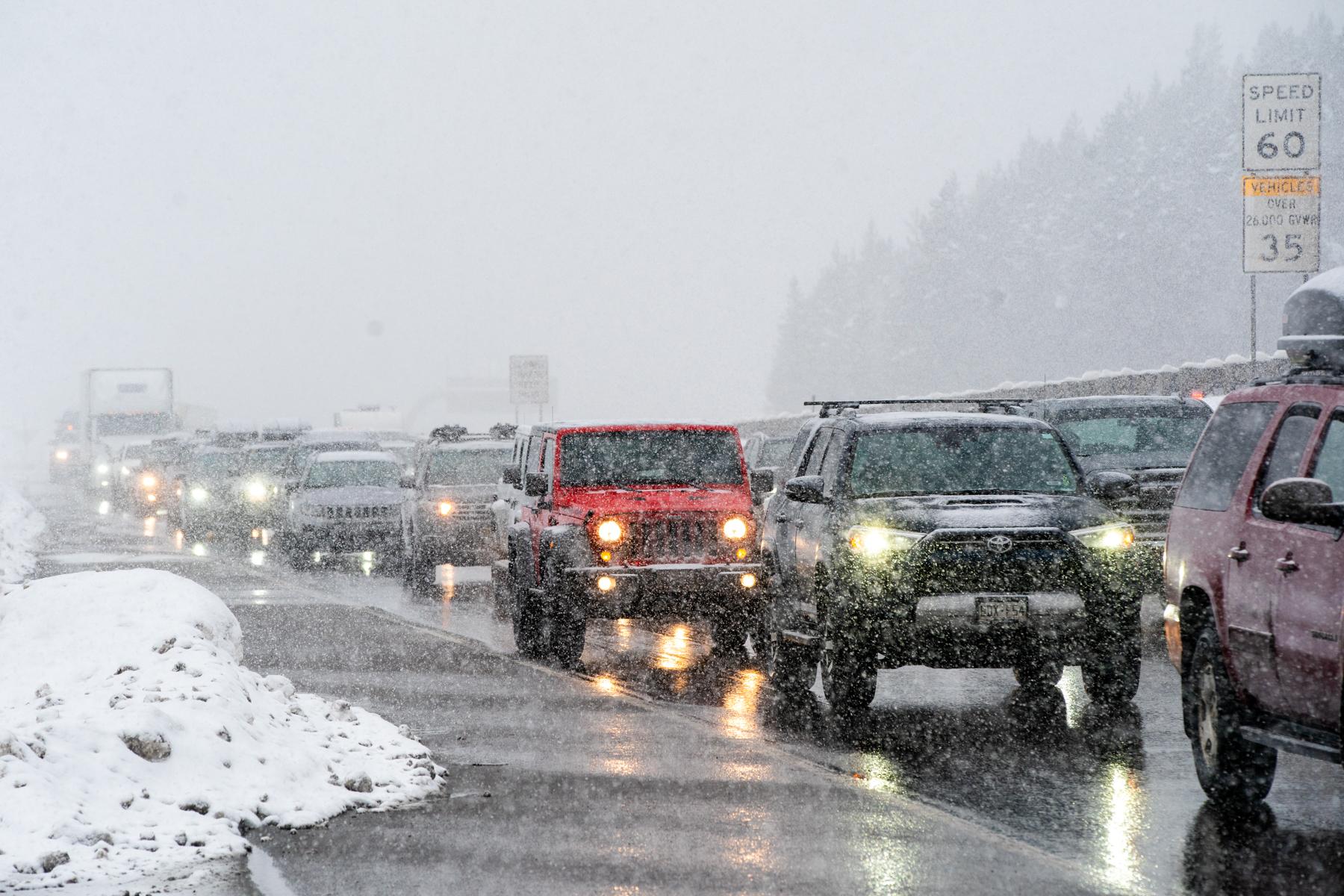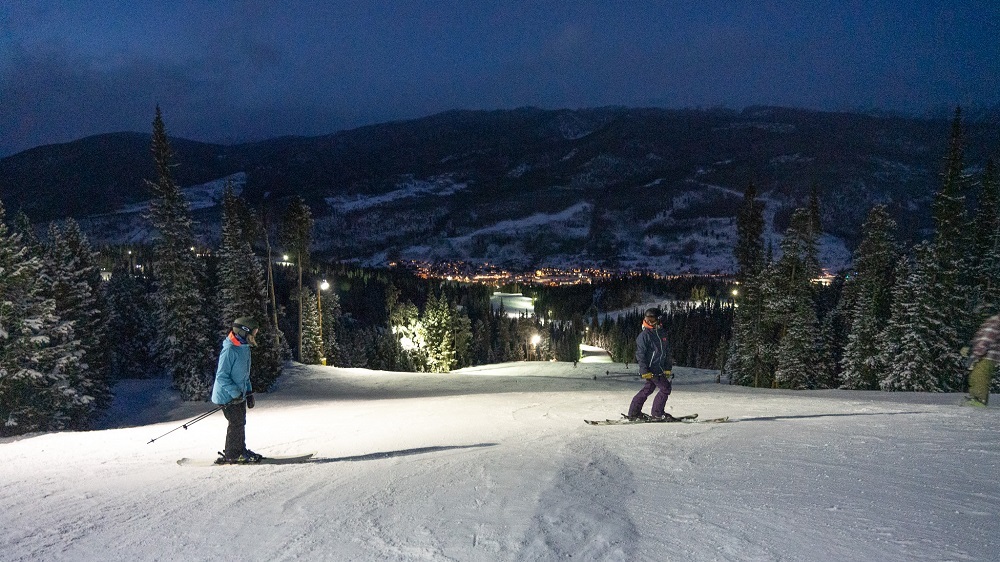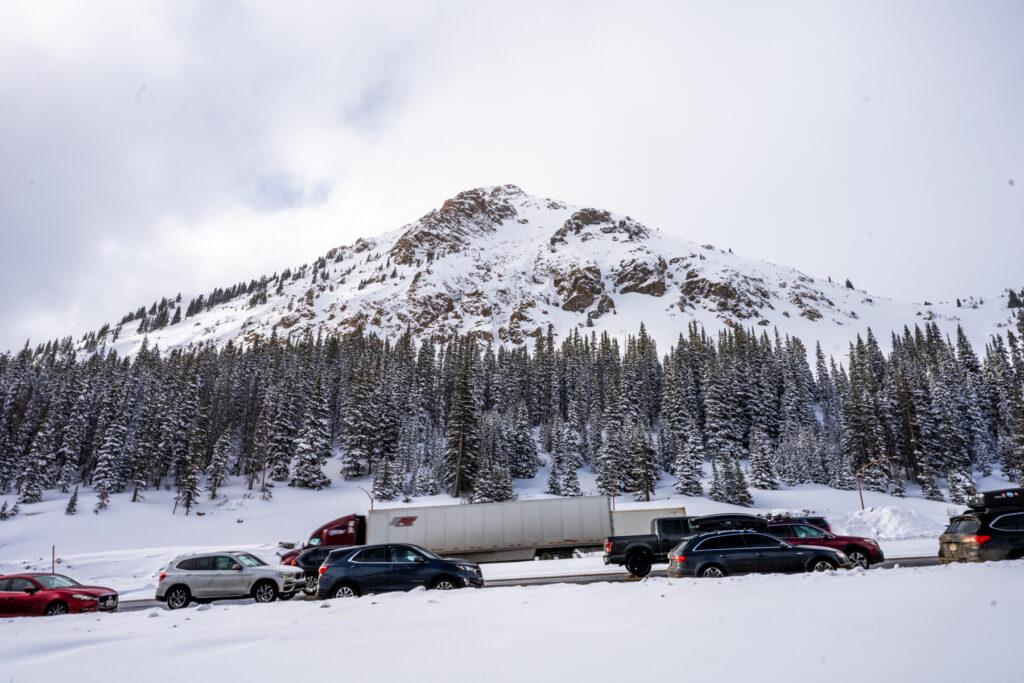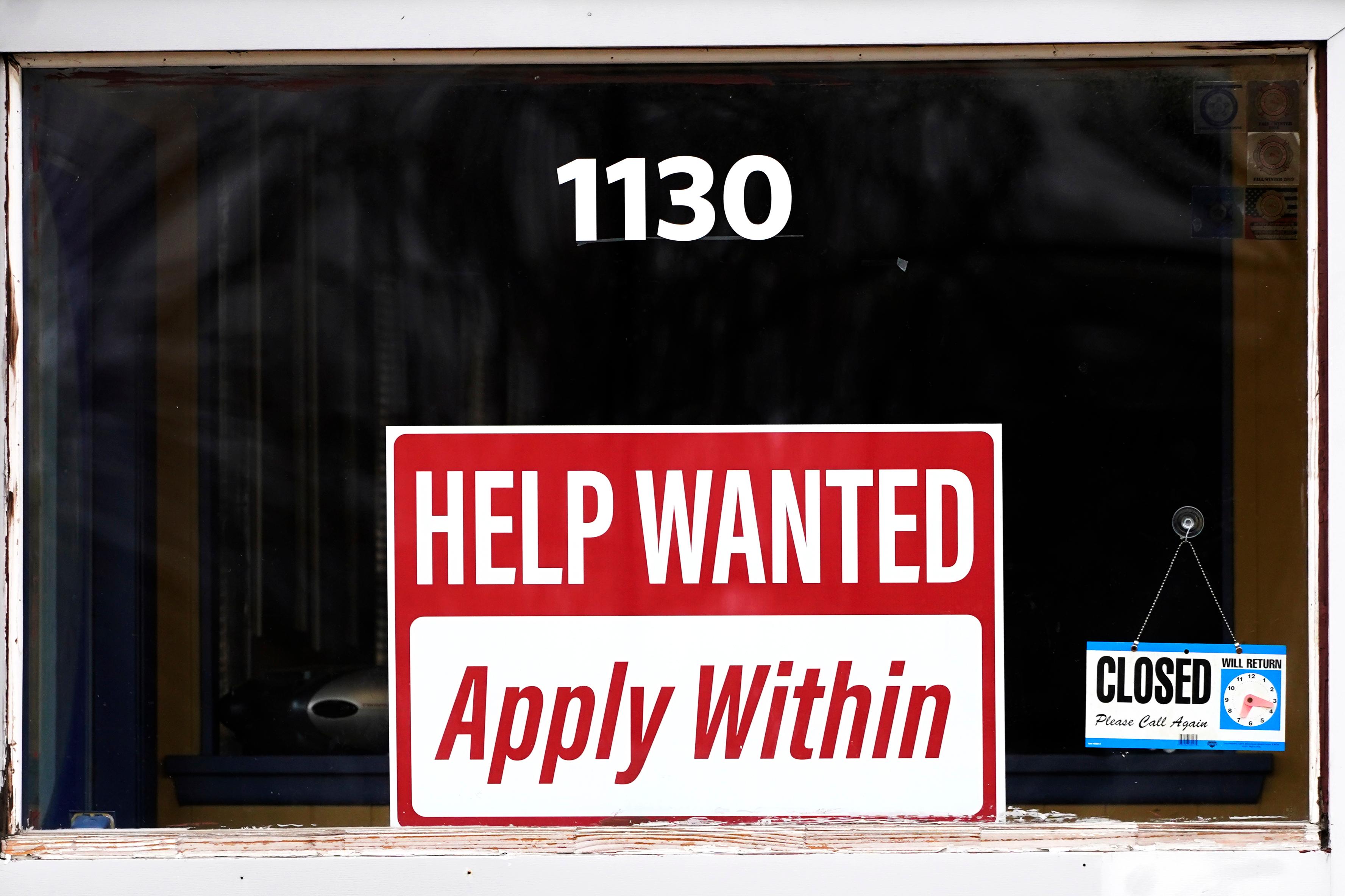
Updated April 1, 2024 3:24 p.m.
People who ski in Colorado know what it’s going to be like in Idaho Springs around 5:20 p.m. from December through April.
Brake lights.
That is because Colorado’s dozens of ski areas close at roughly the same time: 4 p.m.
And then thousands of skiers and winter outdoor enthusiasts — roughly 35,000 cars a day — head back to the metro area.
CPR News received a question via Colorado Wonders from an anonymous outdoorsman who wondered why there wasn’t more coordination between resorts to stagger those closure times.
Or, alternatively, offer more night skiing. The answer, it turns out, is relatively simple.
Ski areas need time and sunlight to work after everyone clears out before everyone comes back.
“We send ski patrol out to do sweeps. Once the lifts shut down, ski patrol goes through the mountain, checking and making sure everyone is off the mountain who should be, they pull ropes and markers and signs so the groomers can come in,” said Jen Miller, a spokeswoman for Winter Park Ski Resorts. “The snowcats run at night, but ski patrol really need daylight.”
Likewise, in the morning: that sea of vehicles between 6 and 8 a.m. are those enthusiastic people gunning for the “first chair” — the time the lifts start operating right at 8 a.m.
Ski resorts say it’s really difficult logistically to start much before then given the winter daylight hours and the work they have to do to set up for all the incoming skiers and boarders.
Companies, including Vail Resorts and Alterra Mountain Company, which operates Winter Park, offer early ski access to season pass holders on occasion, and a half dozen areas in the state offer night skiing — which is an alternative to sitting in Georgetown at 5:20 p.m. staring at red brake lights.
“It’s just another amenity,” said Mike Childers, an associate professor of history at Colorado State University and a ski tourism expert. “As everyone started consolidating in the 1980s and 1990s, there was an arms race to attract more customers, more skiers and snowboarders, meaning that they are trying to create more entities.”

Childers said at its silliest, Vail Resorts started a laser tag area amid a mountain, so people could play laser tag before taking their turns.
He also said there’s a tie between Daylight Saving Time and the ski industry. That is, ski areas like lengthening those days so people stay longer and then enjoy al fresco treats on the mountain.
“Night skiing is a cherry on top of a great ski experience,” said Max Winter (yes, that is his real last name), the spokesman for Keystone Resort, which is owned by Vail.
Keystone and Steamboat Mountain Resorts both offer night skiing weekly at a few of their runs, although Keystone stopped night skiing on March 30. Smaller areas like Granby Ranch and Echo Mountain do too.
Keystone limited it to Fridays, Saturdays, and some holidays because that seemed to draw the most crowds, Winter said.
Winter declined to give specific numbers of people who partook under the lights.
“Skier behavior dictates the decisions we make on the mountain,” Winter said. “We aren’t seeing that demand carry through in the weekdays or later in the evenings past 7 p.m.”
That could be, Childers said because people are actually pooped. And cold.
“You’re usually so exhausted. The days of me charging from 8 a.m. to 3 p.m. are long gone,” he said. “People skiing entire days from opening bell to closing bell is increasingly rare. There’s a reason that ski areas are building more amenities. Like warming huts.”

Editor's note: This story was updated to reflect that Alterra operates Winter Park Ski Area.








